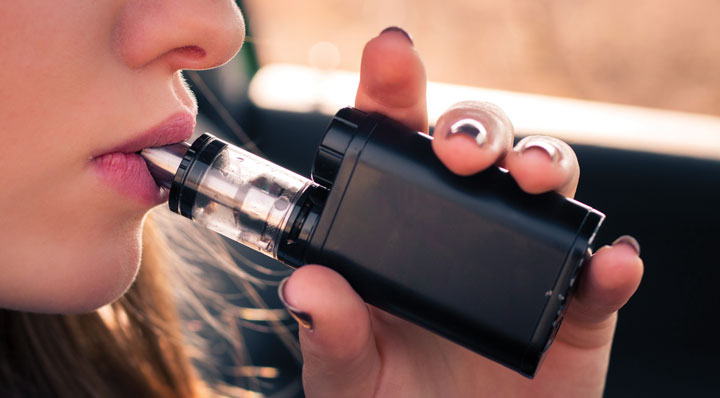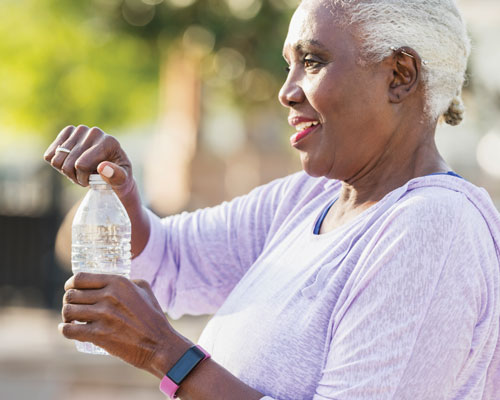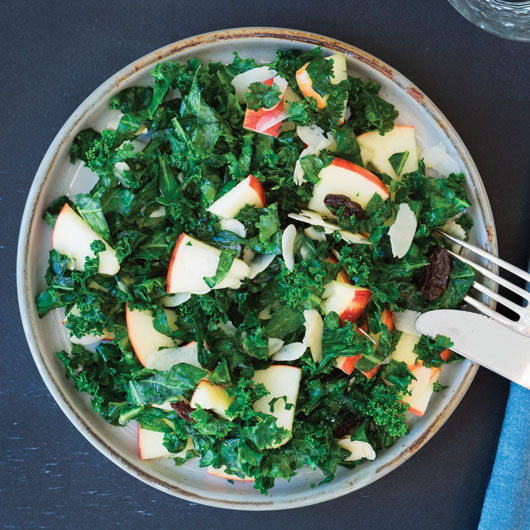



Hot Health Topic
Vaping Emergency: Vapes, Vaporizers, and E-cigarettes – Be Aware and Know Your Risks
Electronic nicotine delivery systems (ENDS) are noncombustible tobacco products, commonly recognized as vapes, vaporizers, vape pens, hookah pens, electronic cigarettes (e-cigarettes or e-cigs), and e-pipes. Manufacturers and sellers market these devices as healthy alternatives for smokers; however, little is known about the long-term health consequences. ENDS use an “e-liquid” that may contain nicotine, flavorings, propylene glycol, vegetable glycerin, and other ingredients. The “e-liquid” is heated to create an aerosol that users inhale through an electronic device. E-cigarettes can be just as harmful as traditional cigarettes. In recent weeks, there have been reports of nearly 1,200 vaping-related severe respiratory illnesses and deaths. The U.S. Food and Drug Administration (FDA) and the U.S. Centers for Disease Control and Prevention (CDC) are working with state and local public health partners to investigate these reports. The U.S. Surgeon General has issued an advisory addressing the vaping emergency among youth.
E-cigarettes entered the U.S. marketplace around 2007, and since 2014, they have been the most commonly used tobacco product among U.S. youth. E-cigarette use among U.S. middle and high school students increased 900% during 2011-2015. In 2018, more than 3.6 million U.S. youth, including 1 in 5 high school students and 1 in 20 middle school students, reported currently using e-cigarettes. According to the CDC, more than 20% of adults aged between 18 to 24 have tried them.
Other negative effects of electronic cigarette exposure include heart problems, nicotine poisoning, gastrointestinal conditions, pulmonary disorders, and even injury caused by e-cigarette battery explosion. In addition, there is evidence associating e-cigarette use with increased coughing and wheezing symptoms, as well as increased asthma attacks.
If you are concerned about your health, or your child’s health, after using a vaping product, immediately contact your health care provider. You may also call the National Poison Control Center at 800-222-1222. This will route you to the nearest poison control center.


Environmental Health
Obesity and Obesogens
Endocrine disruptors are toxic chemicals that interfere with how the body’s hormones function, and are linked to a variety of diseases. Endocrine disruptors that play a role in obesity are called obesogens. Obesogens alter the regulatory system that controls your weight. They can lead to weight gain, may disrupt how the body converts food to energy, and could put individuals at greater risk for obesity.
Some chemicals that may be obesogens include:
-
- Bisphenol A (BPA) – commonly found in many types of baby bottles, plastic food and beverage containers, and metal food cans;
- Phthalates – commonly found in food containers, toys, beauty products, shower curtains, and paint;
- Atrazine – widely used in herbicides in the U.S.;
- Organotins – class of artificial chemicals used for various industrial purposes;
- Perfluorooctanoic Acid (PFOA) – found in non-stick cookware made with Teflon and in microwave popcorn.
Minimize your exposure to environmental chemicals. NIEHS advises:
- Choose fragrance-free products.
- Do not use plastics in the microwave.
- Eat fresh fruit and vegetables.
- Purchase furniture that has not been treated with flame retardants.
- Reduce the use of plastics.

Nutrition Corner
Kale Salad
Are you looking for quick and healthy recipes to help you make smart choices for a healthy lifestyle? Eat kale! Kale is a dark, leafy green vegetable packed with vitamins and minerals. One cup of chopped raw kale provides more than 100% of the recommended daily amounts of vitamins A and K. Try this simple and delicious kale salad recipe.
Recipe provided by Patrice Carr from the Durham County Department of Public Health Nutrition Division.
Ingredients
- 6 large kale leaves
- 1 tablespoon fresh lemon juice
- 1/8 teaspoon salt
- 1/8 teaspoon pepper
- 2 tablespoons olive oil
- 1 tablespoon finely chopped shallot
- 1/2 cup grated ricotta salata or feta cheese
- 1/2 of an apple
- Wash kale and shake dry. Remove stems, break into small bite-sized pieces, and place in large bowl.
- Add lemon juice, salt, pepper, and olive oil to a mason jar.
- Chop shallot and add to mason jar. Replace lid and shake until well mixed. Pour dressing over kale and toss.
- Sprinkle ricotta salata or feta cheese over kale.
- Chop apple into pieces and sprinkle on top of kale.
- Enjoy!

The Reading Nook
Fall 2019 Featured Book Selection
Reading provides numerous health benefits, including learning new skills to improve one's lifestyle. Research published in Neurology suggests that reading stimulates your brain and may help slow the progression of age-related memory conditions such as Alzheimer's Disease and dementia. Reading engages the brain and may preserve brain health and lower cognitive decline in older age. Whether consuming books for self-improvement, knowledge, cognitive improvement, or creativity, reading is good for your health!
The Obesogen Effect: Why We Eat Less and Exercise More but Still Struggle to Lose Weight
Author: Bruce Blumberg, Ph.D., with Kristin Loberg
Summary: Being overweight is not just the result of too many cheeseburgers or not enough exercise. Leading-edge science shows that silent saboteurs in our daily lives contribute greatly to our obesity epidemic: obesogens. These weight-inducing chemicals disrupt our hormonal systems, alter how we create and store fat, and change how we respond to dietary choices.
Obesogens lurk all around us—in food, furniture, plastic products, and other surprising exposure points. In The Obesogen Effect, Dr. Blumberg describes how obesogens work, reveals where they are found, and offers a practical three-step solution for reducing exposures and setting a straight course for better health.

Recenter, Refocus, Recharge
Finding Focus, Calm, Joy, and Balance
Reduce your stress through mindfulness. Mindfulness is the practice of being aware of the present moment – of where you are, how you are feeling, what you are sensing or thinking, and letting go of judgement.
Mindfulness meditation – even when practiced for only five or 10 minutes per day – has proven to be effective in relieving stress and improving one’s sense of well-being. Often mindfulness involves focusing on your breath and breathing. It also can involve doing a body scan or practicing loving kindness – when you focus compassionate and loving energy toward yourself and others. Mindfulness meditation can recenter your thoughts and emotions giving you a calm refuge and renewed energy. It can recharge your day and provide healthful resilience. You can practice anywhere, and you do not need special equipment. Another great tool for self-mediation and relaxation is the use of self-relaxation applications.
A Five-Minute Meditation Practice
- Find a quiet place where you can sit and breath peacefully.
- Set a timer for five minutes. This releases the need to think about time.
- Be alert and relaxed. Posture is important. Sit in an upright and comfortable position that allows you to be relaxed and maintain focus.
- Begin with the breath. Bring your awareness to your breathing, noticing the air flowing in and out of your body. Follow the physical sensations you feel while breathing, rather than thinking about breathing.
- Find your anchor. Your anchor is your breath. Where do you notice your breath? Is it your nose or your stomach? Make that your focus of attention.
- Train your concentration. Take notice of the way you inhale and exhale. If thoughts come to your mind, gently push them aside and refocus on your inhale and exhale.
Citation: Everyday Mindfulness, National Geographic, September 2019.


Sister to Sister: Share Your Story
We would love to hear your story! Sharing a story about your personal WHA experiences can provide encouragement and support to others. Make a difference in the life of another by sharing your poetry, song lyrics, inspirational quotes, drawings, or photos. Email your story to WHA or call 919-541-3852 if you have questions. Your story may be featured in a future newsletter!

Let's Stay in Touch









